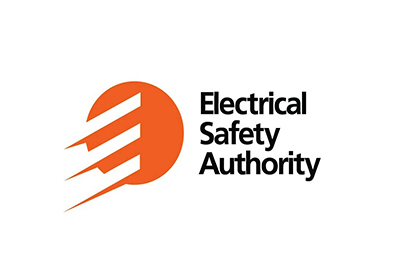ESA Reports More Electrical Fatalities at Home Than at Work in Ontario

Nov 1, 2019
Electrical fatalities in the general public have now outnumbered fatalities in workers, according to the Electrical Safety Authority’s (ESA) Ontario Electrical Safety Report, the only report of its kind in Canada that presents the state of electrical safety.
Occupational deaths typically outnumber non-occupational, but in 2018, four fatalities occurred in the general public and two fatalities occurred in non-electrical occupations.
“Behind each statistic is a human story and these Ontarians unnecessarily lost their lives last year due to electrical harm,” says Dr. Joel Moody, Chief Public Safety Officer, Electrical Safety Authority. “No family should have to endure the pain of losing a loved one when all electrical deaths are preventable.”
Two of the fatalities in the general public occurred from craft artists creating branch patterns on wood with an electrical product – a Lichtenberg generator – that had been disassembled and reassembled creating a hazard. One incident resulted in life-threatening critical injuries.
“The only difference between an injury and a fatality is luck,” says Dr. Moody. “Electricity is unforgiving and the data shows that when electrical injuries occur, if they are not fatal, they are severe and serious in nature.”
Of the nearly 1,000 electrical injuries that occur in Ontario, nearly half are in the general public (48 per cent) and 52 per cent occur at work. The total number of emergency department visits for electrical injuries have decreased by 44 per cent in the past 10 years; however, more than 80 per cent have been classified as critical injuries.
“We see a steady stream of patients with electrical injuries every year, and those injuries can often be life changing,” says Dr. Marc Jeschke, medical director of the Ross Tilley Burn Centre at Sunnybrook Health Sciences Centre. “The more awareness people have about preventing dangerous situations that lead to serious injuries, the better.”
ESA uses data from the Ontario Electrical Safety Report to identify areas that present the greatest risk to Ontarians, to monitor changes in incidence and to identify emerging risks and trends. Other trends to note identified in the report include:
- More than 70 per cent of all electrical-related injuries and fatalities occur in four specific areas: Powerline contact; Electrical trade workers; Misuse of electrical products and unapproved/counterfeit products; Electrical infrastructure fires.
- The average number of occupational deaths (among those who routinely work near electrical sources) has decreased by 7 per cent.
- Cooking fires are the most common type of fire with electricity as the ignition source and
- these types of fires are declining – there was a 10 per cent decrease from 2013 to 2017.
- Utility-related deaths accounted for 50 per cent of all electrical-related fatalities in the
- past 10 years. The number of utility-related equipment fatalities has been decreasing
- since 2009.
- In 2018, there were two powerline fatalities reported. The five-year rolling average rate
- for powerline electrocutions has decreased by 47 per cent when comparing 2009–2013
- and 2014–2018.
“It is imperative that we continue to reduce the number of workers injured or killed by electricity,” says Dr. Moody. “These Ontarians go to work every day to provide for themselves and their families. Having a safe work environment shouldn’t be a privilege.”
You can find the full report HERE









![Guide to the Canadian Electrical Code, Part 1[i] – A Road Map: Section 52 — Diagnostic imaging installations](https://electricalindustry.ca/wp-content/uploads/2022/11/Guide-CE-Code-2.png)






